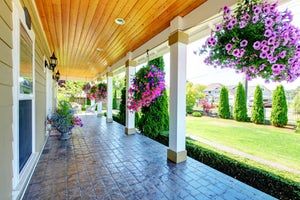With the unseasonably warm temperatures many parts of the U.S. have experienced lately, it’s easy to forget that winter weather is just around the corner. While shopping for a Halloween costume and indulging in all sorts of pumpkin-flavored goodies, don't forget that this time last year, the Northeast experienced one of its worst snowstorms of the season. Accuweather predicts that winter 2012-2013 will be particularly brutal for most of us in the United States, so the prime time to protect your home and property from winter’s damaging effects is now.
Winter storms were one of the most costly types of disaster last year, causing over $2 billion in insured losses, according to Munich RE’s2011 Natural Catastrophe Year in Review report. While standard homeowners insurance policies typically cover winter-related damage such as burst pipes, ice dams, and other problems caused by heavy snow, ice and strong winds, some simple preparation can help prevent these issues from occurring in the first place. The Insurance Information Institute has compiled a super-helpful list of winterization tips for homeowners. Here are some of our favorites:
Clean your gutters: Clearing gutters of sticks, leaves, and other debris can help to prevent ice damming, a source of major water damage to homes that occurs when water is unable to drain from the gutters and instead seeps into the house. Keeping gutters clear of obstructions can also help to prevent roof leaks and flooding in the spring.
Trim trees: Winter storms are characterized by heavy snow, ice and strong winds, all of which can cause weakened trees and dead branches to break, damaging your home, automobile, or injuring someone on your property. Minimize the risk by trimming back overhanging branches and removing dead limbs.
Repair steps and handrails: Broken stairs and loose handrails can cause serious injury any time of the year, but they become particularly hazardous when covered with ice and snow. Protect yourself and others on your property by repairing and securing these fixtures before the cold sets in.
Check the pipes: To avoid burst pipes, make sure that any cracks or fissures are repaired immediately, and wrap any exposed pipes with heating tape to prevent freezing.
Make sure smoke and carbon monoxide detectors are working properly: Residential fires and carbon monoxide leaks tend to increase in the winter, so it's essential to protect your home and family with properly functioning smoke and carbon monoxide detectors.
This is also a great time to review your homeowner's insurance policy documents. Contact your insurance representative with any questions regarding coverage, so that you are prepared in an emergency. With all of these things taken care of, you can kick back and relax with a cup of your favorite hot cocoa, saying “Let it snow, let it snow, let it snow!”





